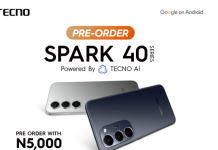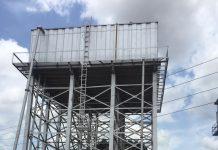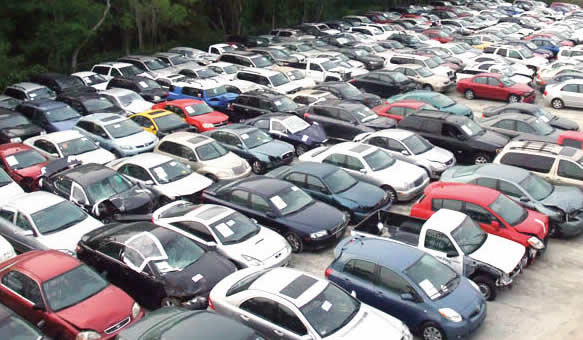Buying a Tokunbo car in Nigeria—whether it’s from Berger in Lagos or shipped directly from Cotonou—is like threading a needle in a storm. You’re hoping for good value, but one overlooked issue and boom—your “sweet deal” becomes a money pit.
Now, that’s not to scare you, but let’s be honest: in Nigeria, used cars come with stories. Some good, some tragic. Your job? Figure out which is which before the money changes hands. So, let’s get into the nitty-gritty—the 11 checks you should absolutely, positively, without-fail run through before you buy a Tokunbo vehicle in Nigeria.
1. Start With the VIN or Prepare to Be Sorry
Think of the Vehicle Identification Number (VIN) as the car’s DNA. Every scratch, crash, and cross-country haul—it’s all recorded. Get that number and plug it into a platform like AutoCheck, Carfax, or even local services that give you access to import and accident history.
If a seller hesitates to hand over the VIN or gives you a report that looks sketchy, don’t rationalize it—just walk away. There are too many decent options out there to start your car-buying journey with suspicion.
2. Pop the Hood—Don’t Just Gawk at the Body
This isn’t a beauty contest. That shiny exterior might be hiding an engine that’s practically coughing its last breath. Here’s what you need to do:
- Pull out the dipstick and check the engine oil—dirty oil means poor maintenance.
- Look under the car for leaks—oil, coolant, transmission fluid. Any of those is a bad sign.
- Start the car and listen closely. A steady hum is fine. Rattling, loud ticking, or smoke? Problem.
One more thing—don’t let the seller rush you. A proper engine check takes time.
3. Check the Chassis Like You’re Looking for Clues in a Crime Scene
Because frankly, you are. Bent frames, weld marks, rust under the body—these are the footprints of past accidents. Some sellers do a great job cleaning up the surface but forget the underside tells a deeper story.
If the car was imported from snowy parts of the U.S. or Canada, be extra wary—salt from winter roads is a silent killer of chassis steel.
4. The Transmission Test Is the Deal Breaker
Take it for a spin. Not around the corner—an actual test drive on open road. Pay attention to how it shifts. Automatic? It should be butter-smooth. Manual? Gear changes should be clean and firm.
If you notice jerking, gear slipping, or weird sounds when accelerating—your wallet should start itching because a bad transmission is costly to fix.
5. Look Down—Your Tires Are Talking
Uneven wear on the tires often means more than just age. It could be:
- Suspension issues
- Wheel misalignment
- Chassis problems
Bounce the car lightly. If it rocks excessively or you hear knocking sounds over bumps, the shocks might be gone. Suspension repairs aren’t cheap, especially if you’re fixing multiple components at once.
6. Dashboard Lights Are the Car’s Way of Begging for Help
When you start the car, all warning lights should come on for a second, then disappear. If any stay on—especially the check engine, ABS, or airbag lights—take that seriously.
Don’t guess. Use a diagnostic scanner or ask the mechanic to plug one in. That tiny blinking light could mean anything from a faulty sensor to a busted catalytic converter.
7. The Interior Tells You How the Car Was Treated
You can tell a lot about a car’s past by sitting in it for five minutes:
- Sagging roof lining? Poor storage.
- Faded dashboard? Sun exposure.
- Torn seats or broken AC controls? Rough handling.
- Damp smell or wet carpets? Flood damage. Run!
And let’s face it—if the previous owner couldn’t keep the inside tidy, you really think they changed the oil regularly?
8. Don’t Just Tap the Brakes—Test Them for Real
Brake performance isn’t something to guess. On your test drive, ask yourself:
- Does the brake pedal respond quickly?
- Any squeaking, grinding, or screeching?
- Does the car pull to one side or does the steering wheel shake when you brake?
Nigerian roads are unpredictable. You don’t want to find out your brakes are weak when danfo drivers are swerving in traffic.
9. Paint Jobs Can Lie—So Can Body Panels
Look at the exterior in broad daylight, not in a dim car park. Here’s what to watch:
- Different shades of paint on panels? Probably repainted after a crash.
- Bubbling paint or rough textures? Body filler (putty)—a cover-up.
- Use a small magnet to check metal panels. If it doesn’t stick evenly, the panel might’ve been filled or replaced.
Don’t forget the windshield and windows—cracks and fogging mean more expenses.
10. Documents Must Be Water-Tight, Not Half-Baked
This is Nigeria. If your car papers aren’t intact, you’re just borrowing problems. What you must confirm:
- Original customs duty certificate
- Bill of lading
- Form M
- Vehicle registration documents
- Proof of ownership (plus the seller’s valid ID)
If the seller starts fumbling or says “Oga, I go bring am later,” politely say, “don’t worry, keep your car.”
FRSC won’t take “he said he’d bring it” as an excuse when you’re flagged down.
11. Always Bring a Trusted Mechanic—No Matter What You Think You Know
Yes, you’ve watched YouTube tutorials. Maybe you’ve even bought a car before. Still—bring a mechanic.
Why? They can:
- Catch tampered odometers
- Check for hidden accident damage
- Tell you if the asking price is fair
- Save you from buying a car that looks perfect but drives like a worn-out generator
Mechanics see things the average buyer won’t notice, no matter how “sharp” you think you are.
Final Thoughts
Here’s the thing—the Nigerian car market isn’t going anywhere. So why rush and regret? Ask questions, inspect thoroughly, and take your time. The more detailed you are, the better your odds of driving away with something you’ll actually enjoy—not just endure. And remember: A good Tokunbo car doesn’t just save you money—it gives you peace of mind. That’s priceless.













